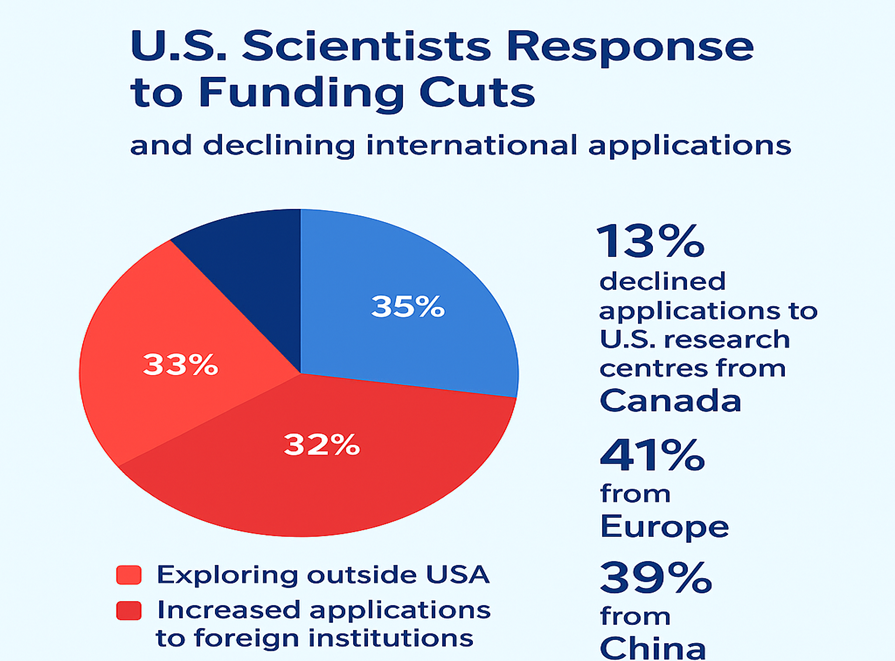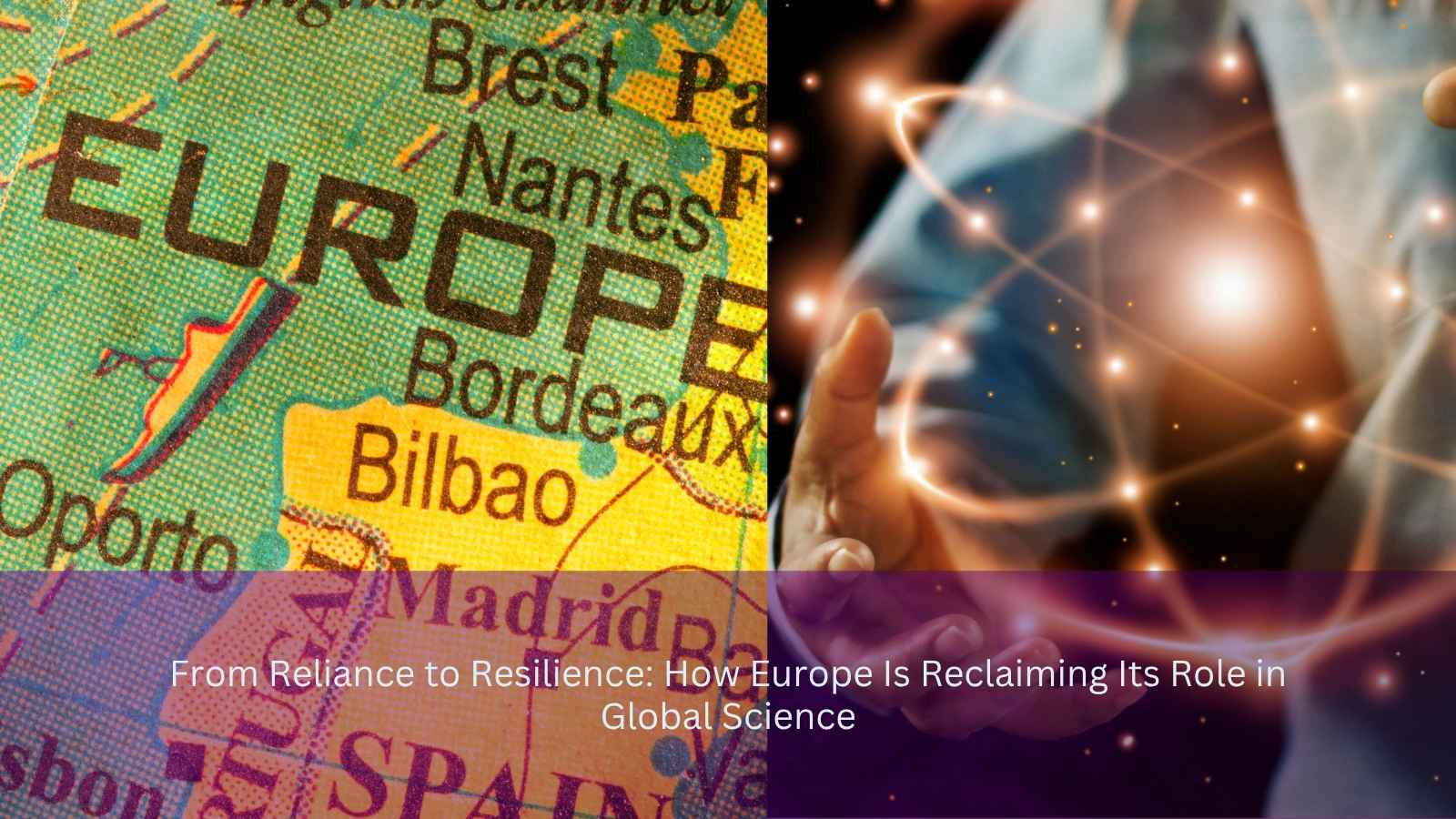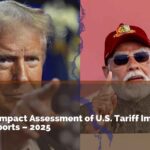01 August 2025, Europe
In response to the U.S. withdrawal from its traditional leadership in global science driven by deep federal budget cuts and ideological shifts under President Trump’s second term Europe is embarking on a powerful shift to enhance its independence in climate, oceanic, and health research. The European Union (EU) and member states are now investing in autonomous scientific information systems, research initiatives, and personnel acquisition to counter the rising uncertainty related to U.S. contributions to global scientific infrastructure.
Furthermore, the European Commission introduced the “Choose Europe for Science” campaign, with €500 million ($568 million) over 2027 to pursue displaced researchers especially from the United States and homegrown R&D capacity. The EU has also undertaken a goal of having member states invest 3% of GDP in research and development by 2030.
U.S. Funding Cuts and Policy Disruptions
The proposed U.S. budget for the 2026 fiscal year outlines deep cuts to scientific agencies.
- Funding for the National Science Foundation would be reduced by 56%.
- NIH (National Institutes of Health) would be cut by 40%.
- Above 200 federal grants for HIV research were cancelled.
- NIH studies on Covid have been defunded.
- Columbia University lost a $400 million funding reduction, purportedly for political purposes.
- NIH facilities dedicated to diseases such as Ebola were shut down.
These disturbances have precipitated general alarm in the U.S. scientific community and are inducing a palpable exodus of scientists overseas.
Exodus of Scientific Talent from the U.S.
The pie chart below reflects an alarming shift in sentiment among American researchers. More than one-third (35%) are considering moving to other nations, 32% have already upped applications at foreign universities, and 33% are actively seeking foreign opportunities. This indicates increasing unhappiness with domestic research grants, political uncertainty, and perceived ideological restrictions under new federal policies. Erosion of U.S. as a Scientific Magnet. Equally concerning is the decline in interest from foreign scientists in working in the U.S. In Q1 2025:
Applications declined by a whopping 41% from Europe
- With a decline of 39% from China
- There was a 13% reduction of applications to American institutions from Canada
These statistics represent a serious blow to the reputation and business of the U.S. in retaining its position as the world’s center of innovation and collaboration in research.

Europe’s Response: Infrastructure and Innovation Strategy
- Building Sovereign Data Networks
European governments are putting a priority on the development of EMODnet the European Marine Observation and Data Network which pools data regarding shipping lanes, seabed habitats, marine litter, and coastal ecosystems. They want to replicate or substitute U.S. services, making themselves less susceptible to data outages from NOAA and other agencies.
Several nations Denmark, Germany, Norway, Finland, Spain, Sweden, and the Netherlands are going on coordinated efforts to save U.S. datasets and build parallel data channels.
Special focus is on amplifying EU investment in the Argo program, a global ocean monitoring initiative historically funded 57% by the U.S. and 23% by the EU. Increased EU contribution would signify a historic shift in ocean science leadership.
- Attracting Global Talent: The “Choose Europe for Science” Initiative
In May 2025, the European Union launched the ambitious “Choose Europe for Science” initiative, supported by €500 million in funding by 2027. This tactical step directly reacts to substantial U.S. science budget cuts, hoping to lure higher-quality global researchers particularly those hit by political and financial uncertainty in the United States.
Under this Program –
- The European Research Council doubled its relocation grant to €2 million per researcher.
- Flagship national programs in France, Germany, and Spain coordinated to strengthen their pipelines of talent.
- The EU adopted a visionary objective to increase R&D expenditure to 3% of GDP by 2030, reaffirming science as the pillar of European sovereignty and innovation.
France: A Safe Place for Science – Aix-Marseille University in France has introduced the “A Safe Place for Science” initiative a €15 million initiative to provide a refuge for American researchers who have been fired or constrained by national policies. The initiative’s objective is to provide an umbrella for scientific research to proceed unrestricted by ideological interference, making France a champion of academic excellence and freedom.
Germany: Building Transatlantic Bridges – Germany’s Max Planck Society is fortifying its scientific primacy with the establishment of the Max Planck Transatlantic Program to create joint research institutes with American institutions. The society has made a bold outreach to first-rate American scientists affected by changes in domestic policy to join them with director-level appointments and a secure environment for high-impact science.
Spain: Leading Through Innovation and Sovereignty – Spain, also, is seeking to become the hub of this world repositioning of scientific expertise. Secretary of State Juan Cruz Cigudosa set out a vision for the future with emphasis on quantum biotechnology, artificial intelligence, semiconductors, and high-performance materials. Spain’s strategy places technological sovereignty as a key support pillar for its national development.
The nation’s traditional ATRAE program has been strengthened by €45 million to include the best U.S. professionals. Chosen researchers will get an extra €200,000 of funding per project. In addition, Spain’s Ramón y Cajal program, set up to promote young scientific talent, has boosted its funding capabilities by 150% since 2018. It now funds 500 researchers every year, 30% of whom are international.
Sectoral Impacts & Market Opportunities
Sector | Impact / Opportunity |
|
Shipping & Logistics |
Enhanced marine route planning; resilience to weather disruptions; independent navigation metrics. |
|
Energy (Offshore & Renewables) |
Site planning for wind farms and pipelines driven by sovereign ocean/weather data. |
|
Insurance & Climate Risk |
Filling climate-modelling gaps as reliance on U.S. records erodes; building local analytics capabilities. |
|
Infrastructure & Coastal Planning |
Improved risk projections and long-term asset protection funded by localized climate intelligence. |
|
Public Sector & R&D |
An opportunity to build self-sustaining marine science infrastructure and elevate regional research leadership. |
Key Takeaway
Europe is capitalizing on existing disruptions to U.S. science policy as an opportunity rather than a crisis. With investments in climate and ocean data infrastructure and actively hiring displaced talent, the EU is poised to dominate not only resilience but scientific sovereignty. The step redefines the global research landscape, reconfigures geopolitical dependencies, and opens opportunities for public and private sectors along innovation, climate strategy, and high-tech research.










